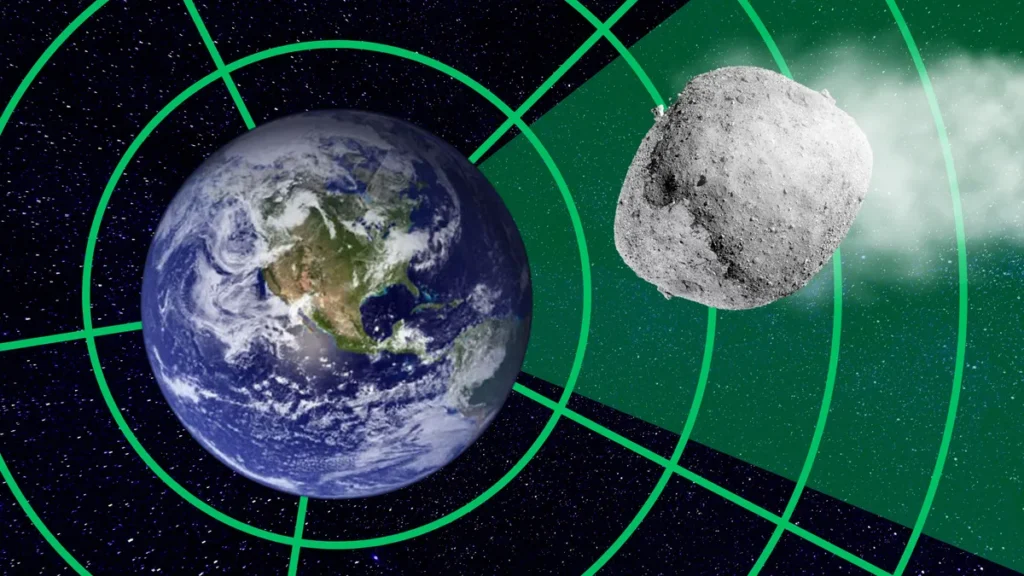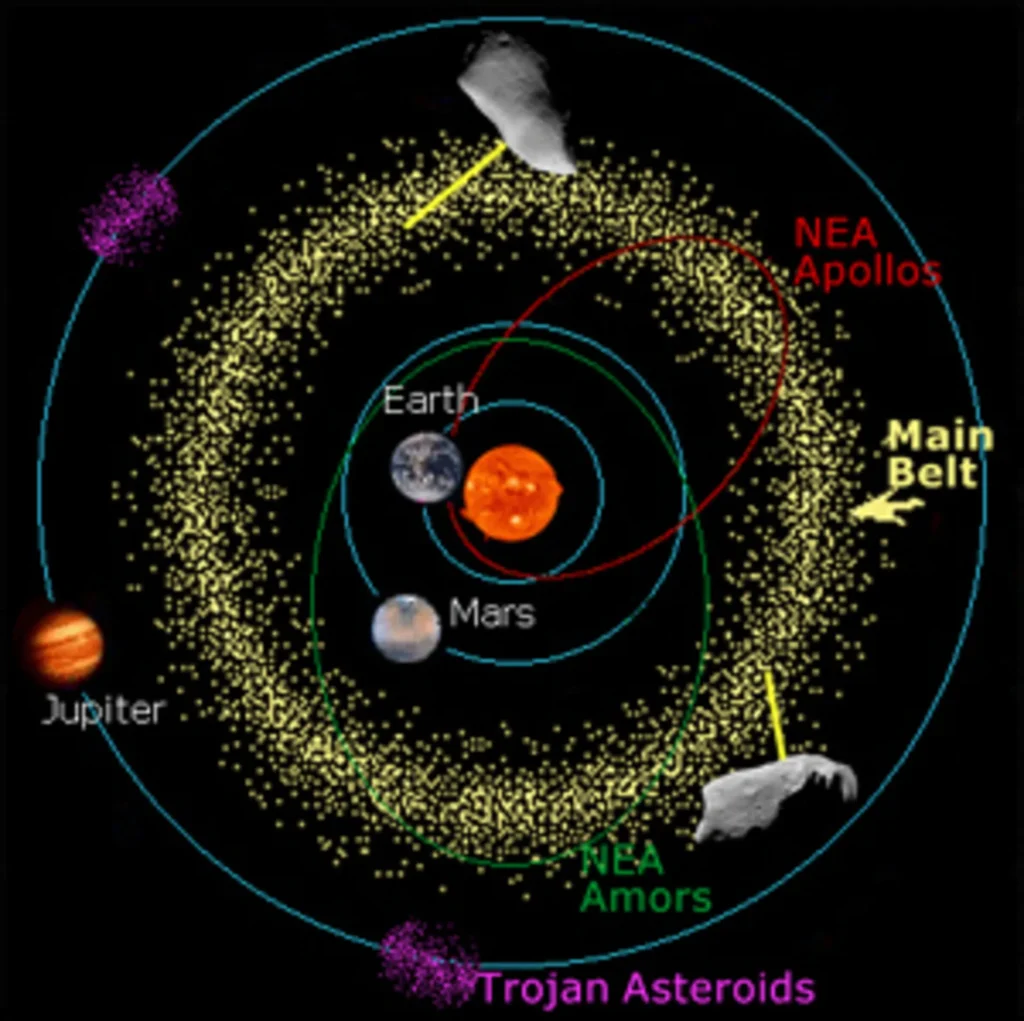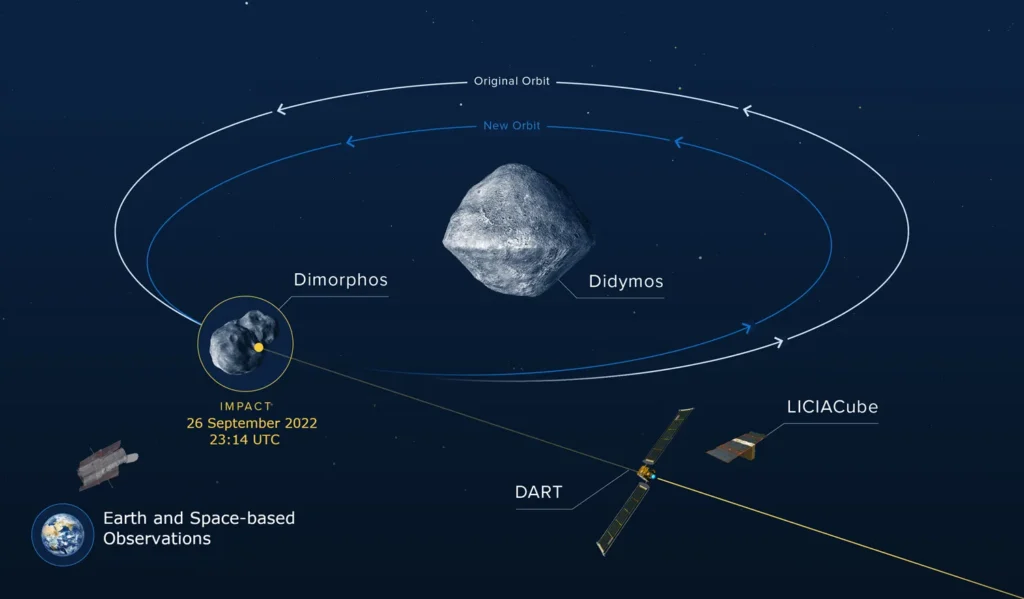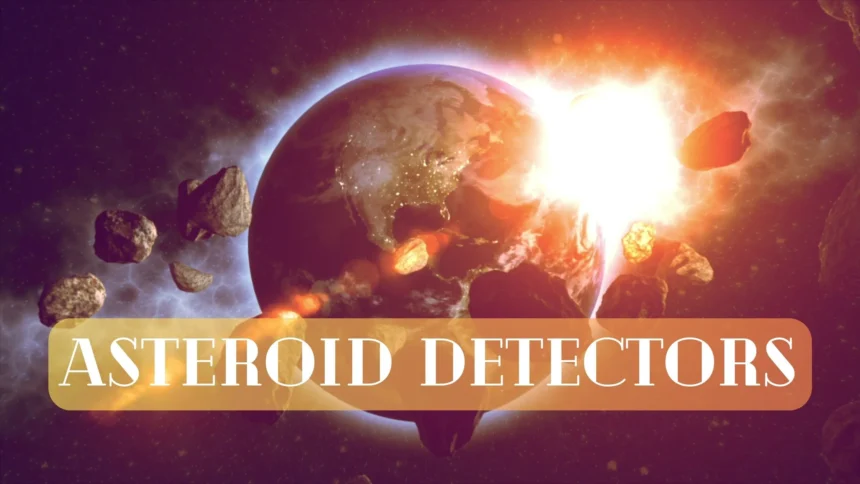Introduction
Asteroid impacts have long been a subject of fascination and concern. The thought of a celestial body colliding with Earth evokes images of catastrophic events and mass extinctions. While large-scale asteroid impacts are rare, the potential consequences necessitate robust detection and monitoring systems. Asteroid detectors play a pivotal role in identifying and tracking these near-Earth objects (NEOs), providing crucial data to prevent potential disasters.
What Are Asteroids and Why Should We Care?
Asteroids are rocky remnants from the early solar system, primarily found in the asteroid belt between Mars and Jupiter. However, some, known as near-Earth asteroids, have orbits that bring them close to Earth’s path. While most pose no threat, certain asteroids, especially those exceeding 140 meters in diameter, are classified as potentially hazardous. Understanding and monitoring these objects are vital for planetary defense.
Read also: Detecting Life on Mars: A Breakthrough in Space Research
Potential Threats Caused by Asteroids
- Mass Extinction: Large asteroids, particularly those over 1 kilometer in diameter, have the potential to cause mass extinction events. A famous example is the asteroid that struck Earth around 66 million years ago, contributing to the extinction of the dinosaurs. This type of asteroid impact is rare but devastating.
- Regional Destruction: Although smaller asteroids are less likely to cause global disasters, they can still create significant regional destruction. Depending on the size and location of the impact, it could lead to massive fires, tsunamis, and infrastructure destruction.
- Atmospheric Disruptions: When an asteroid enters Earth’s atmosphere and explodes, it can release enormous amounts of energy. This explosion could cause shock waves, temperature fluctuations, and disruptions in the climate, similar to the Tunguska event in 1908, where an asteroid exploded over Siberia, flattening trees over a vast area.
- Economic Losses: The destruction of key infrastructure, such as cities, industrial centers, and transportation networks, could lead to severe economic losses. The aftermath of such an impact would be both costly and difficult to recover from.
- Asteroid Impact on Space Technology: A significant asteroid impact on Earth could also damage satellites and other space-based technology, causing long-term disruptions to global communication systems and weather forecasting.
Read also: Mysterious Phenomenon at the Heart of the Milky Way Hints at a New Dark Matter Suspect
The Technology Behind Asteroid Detection
Advancements in asteroid detection technology have significantly improved our ability to identify and track NEOs. These systems can be broadly categorized into ground-based and space-based detectors.
Ground-Based Detectors
Ground-based detectors are terrestrial telescopes and radar systems that scan the skies for NEOs. Notable ground-based detection systems include:
- Pan-STARRS (Panoramic Survey Telescope and Rapid Response System): Located in Hawaii, Pan-STARRS provides wide-field optical and near-infrared imaging, enabling the detection of asteroids and comets.
- Catalina Sky Survey: Based in Arizona, this program utilizes multiple telescopes to discover and track NEOs, contributing significantly to asteroid monitoring efforts.
Space-Based Detectors
Space-based detectors are satellites and space missions designed to observe asteroids from space, offering unique advantages over ground-based systems. Prominent space-based detectors include:
- NEOWISE: A reactivated mission of the WISE (Wide-field Infrared Survey Explorer) spacecraft, NEOWISE surveys the sky in infrared wavelengths, aiding in the discovery and characterization of asteroids.
- Hera Mission: An upcoming European Space Agency mission, Hera aims to investigate the binary asteroid system Didymos and its moonlet, providing insights into asteroid deflection techniques.
Read also: Uncovering the Hidden Wonders: 7 Unique Planets in Our Solar System
Advanced Radar Systems
Advanced radar systems enhance asteroid detection by providing precise measurements of an asteroid’s size, shape, rotation, and trajectory. These systems include:
- Arecibo Observatory: Before its collapse in 2020, Arecibo in Puerto Rico was instrumental in asteroid radar observations, offering detailed data on NEOs.
- Goldstone Solar System Radar: Part of NASA’s Deep Space Network, Goldstone in California continues to conduct radar observations of asteroids, contributing to our understanding of their characteristics.
How Do Asteroid Detectors Work?
Asteroid detectors employ various methods to identify and monitor NEOs:
- Optical Telescopes: These instruments capture visible light reflected off asteroids, allowing astronomers to determine their position and brightness.
- Infrared Observatories: By detecting infrared wavelengths, these observatories identify the heat emitted by asteroids, aiding in size estimation and surface composition analysis.
- Radar Systems: Radar waves bounce off asteroids, providing precise measurements of distance, velocity, and surface features.
- Artificial Intelligence (AI): AI algorithms process vast amounts of observational data, enhancing the speed and accuracy of asteroid detection and tracking.

Challenges in Asteroid Detection and Monitoring
Despite technological advancements, several challenges persist in asteroid detection:
- Detection Range: Limited by the sensitivity of current instruments, some asteroids, especially smaller ones, remain undetected until they approach Earth.
- Small Asteroids: Objects less than 140 meters in diameter are harder to detect, yet they can still cause significant regional damage.
- Real-Time Tracking: Asteroids’ unpredictable trajectories and speeds make continuous monitoring and precise orbit determination challenging.
Read also: NASA is Shutting Down Voyager 1 and 2: The End of a Pioneering Era in Space Exploration
How Asteroid Detectors Can Protect Earth
Early detection through asteroid detectors is crucial for planetary defense:
- Impact Mitigation: Identifying potential impacts allows for the development of deflection strategies, such as kinetic impactors or gravity tractors, to alter an asteroid’s path.
- Evacuation Planning: Knowledge of a potential impact zone enables authorities to plan evacuations and implement protective measures.
- International Collaboration: Global awareness of asteroid threats fosters cooperation in developing and executing defense strategies.
- Early Detection of Near-Earth Objects (NEOs): Asteroid detectors identify asteroids and comets that approach Earth’s orbit, helping scientists detect potential threats before they become a danger.

- Trajectory Prediction: By monitoring asteroids’ orbits over time, asteroid detectors allow scientists to predict their future paths, identifying objects that may approach Earth in the near or distant future.
- Characterization of Asteroids: These detectors help characterize the size, shape, speed, and composition of asteroids, providing critical data for assessing potential impact risks and formulating mitigation strategies.
- Collision Probability Estimation:
- Asteroid detectors assess the probability of collision with Earth by analyzing an asteroid’s orbit and calculating the likelihood of an impact. This helps prioritize threats that require immediate attention.
- Tracking Small and Fast-Moving Asteroids: While large asteroids are easier to detect, asteroid detectors are crucial in tracking smaller, faster-moving objects that might otherwise go undetected until it’s too late.
- Monitoring Asteroid Rotation and Surface Composition: Asteroid detectors can monitor the rotation and surface features of asteroids, which is essential in understanding how an asteroid might respond to deflection attempts.
- Space Mission Planning: Asteroid monitoring helps plan missions that study asteroids up close, such as NASA’s DART mission, which tests asteroid deflection techniques.
Read also: 12 Unbelievable Places to Visit in the Solar System for Space Lovers
Recent Developments in Asteroid Detection
Recent events underscore the importance of asteroid detection:
- Asteroid 2024 YR4: Discovered in December 2024, initial observations suggested a 3% chance of Earth impact in 2032. However, subsequent data have revised this probability downward to between 0.001% and 0.004%, highlighting the dynamic nature of asteroid tracking.
- Double Asteroid Redirection Test (DART): NASA’s DART mission successfully demonstrated asteroid deflection capabilities by altering the orbit of the asteroid moonlet Dimorphos, showcasing a potential method for planetary defense.

- Asteroid 2020 CD3: Asteroid 2020 CD3 was temporarily captured by Earth’s gravity in 2020. This small asteroid, measuring only a few meters across, entered Earth’s orbit and remained there for about three years before being ejected.
- Chinese Asteroid Detection Program: China’s space agency has been ramping up efforts in asteroid detection through its asteroid tracking program. In 2024, the Long March 5B rocket launched a new satellite designed to detect and track near-Earth objects. This satellite is equipped with high-resolution imaging technology to identify smaller asteroids that are often missed by other detection systems.
- Asteroid Impact Risk Reduction (AIRR) Project: The European Space Agency (ESA) launched the AIRR project to explore and develop technologies that can help mitigate asteroid impact risks. One of the primary focuses of the project is to improve the early detection of hazardous asteroids and assess the best methods for deflecting or altering their course, including both nuclear and non-nuclear approaches.
Read also: Solar Storm in Space | Reasons, Measurement, Effects and the Last Solar Storm Hit
Future of Asteroid Detection
The future of asteroid detection involves:
- Enhanced Surveys: Deploying more powerful telescopes and radar systems to increase the discovery rate and tracking accuracy of NEOs.
- Space Missions: Launching missions like Hera and NASA’s Near-Earth Object Surveyor to study asteroids up close and test deflection techniques.
- Global Initiatives: Establishing international protocols and collaborations for asteroid monitoring and defense, ensuring a coordinated response to potential threats.
Key Takeaways
- Asteroid detectors are essential for identifying and monitoring NEOs, ensuring we can detect potential impacts long before they reach Earth.
- Ground-based and space-based technologies are advancing, with radar systems and telescopes offering more precise and detailed data.
- AI and advanced computational techniques are enhancing detection accuracy and response time.
- International cooperation and preparedness are crucial for planetary defense against asteroid impacts.
Conclusion
As our understanding of the cosmos grows, asteroid detectors play a critical role in safeguarding Earth from potential asteroid impacts. With advancements in detection technology, we are better equipped than ever before to identify and track near-Earth objects, even those that are small and difficult to detect.
The integration of artificial intelligence, space-based missions, and international collaborations promises to further enhance our ability to monitor and protect our planet from space threats. By investing in these technologies and continuing research, we can ensure a proactive approach to planetary defense.
In conclusion, while the risk of a catastrophic asteroid impact remains low, the threat is real, and the importance of asteroid detectors cannot be overstated. The more we improve these systems, the better prepared we will be to defend Earth, providing a safeguard for future generations.
FAQs
1. What are asteroid detectors?
Asteroid detectors are advanced systems designed to identify and track near-Earth objects, including asteroids, to prevent potential impacts.
2. How accurate are asteroid detection systems?
While current systems are highly accurate, smaller asteroids still pose a challenge due to limited detection range and size.
3. Can we prevent an asteroid impact?
Yes, with early detection, deflection techniques like kinetic impactors or gravitational tractors can alter an asteroid’s path and prevent impact.
4. How often do asteroids hit Earth?
Asteroid impacts are rare, but smaller objects can strike Earth every few years, causing regional damage. Large-scale impacts are extremely rare.
5. What is NASA doing to protect Earth from asteroids?
NASA is conducting missions like DART to develop asteroid deflection strategies and is working on increasing the detection capabilities of space telescopes.
6. What can be done if an asteroid is detected on a collision course with Earth?
Detection can allow for deflection missions or, if it’s too late, evacuation and emergency preparedness to minimize impact damage.





